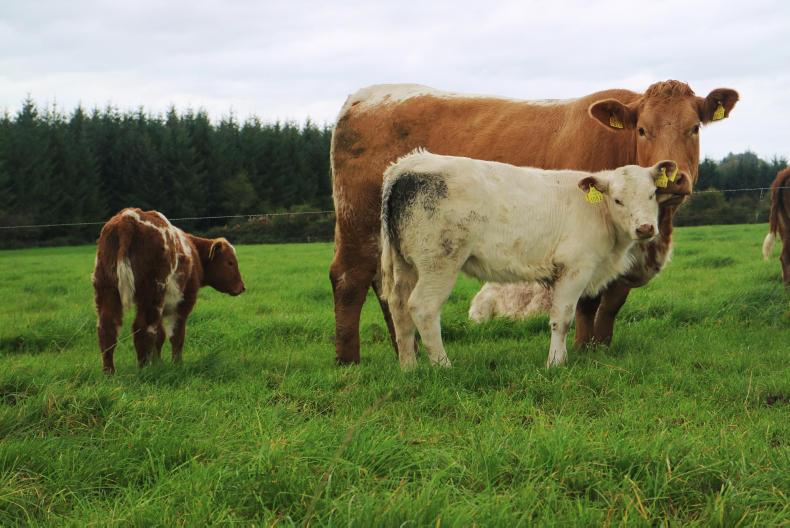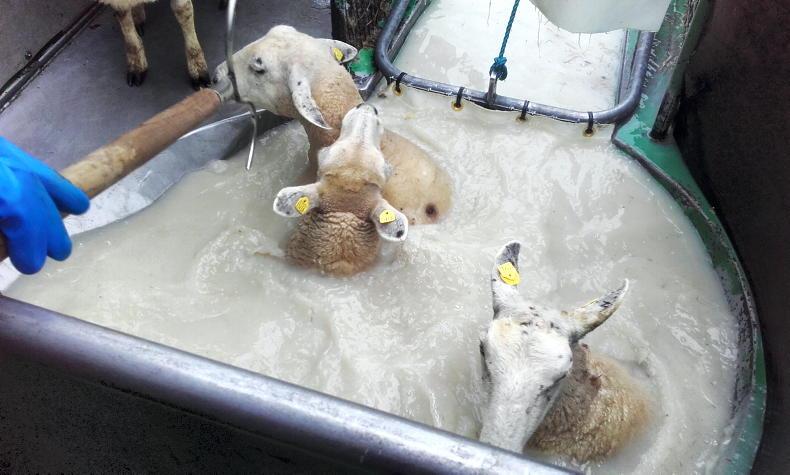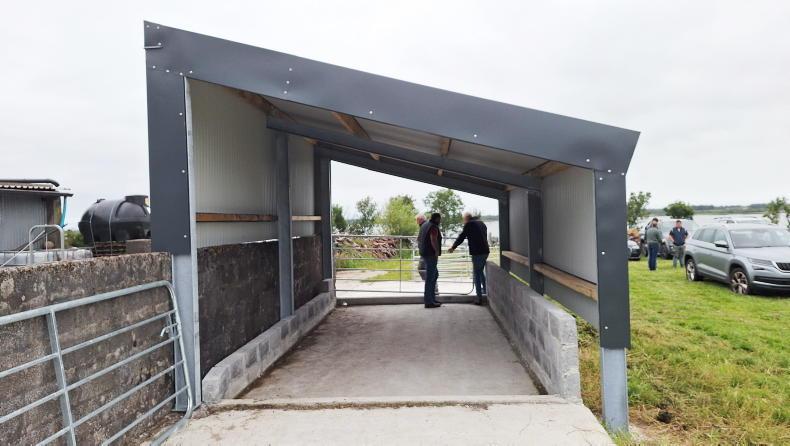Time and time again the word “output” crops up on these pages. It’s the main driver of profit on beef farms – kilos of beef out the gate. And while stocking rate, nutrition, genetics and system play key roles in achieving high output, a calf on the ground annually from each cow is still the main ingredient for output in suckling.
As phase two of the programme draws to a close, it’s worth taking a final look at the calving performance of the 27 remaining producers. Within the group there are hugely varying circumstances and here the effects of these on calving performance are laid bare. How do they measure up against yours?
The group
As a group, our BETTER farmers are setting the pace. They’re calving more often, getting more calves on the ground in a given year and achieving lower mortality rates than the national average farmers. However, I would refrain from benchmarking against the national average figures as a suckler farmer. These figures are skewed by hobby farms, and those recycling cows to grow their herds. Focus instead on the targets: 365-day calving interval, one calf/cow, minimal mortality, zero un-calved breeding females and minimal difficult calvings.
Top performers:
Calving interval – David Walsh, Co Tipperary.Calves/cow – Michael Smith, Co Cavan.Region, calving pattern
Herd health problems for our two Donegal farmers, James Strain and Charles Crawford, have hit the northern performance figures. Standardising their figures puts the region on par with the south and west.
That our split-calvers are leading the way in terms of calving interval is evidence of a changing mindset, for the good. Many producers use split calving to bounce around sub-fertile cows, moving between herds when the slip begins. Now, only a very small number of our BETTER farmers allow cows to slide between herds. And rightly so – it’s an unrewarding drain on resources.
High cow/calf and low empty rates in the autumn herds is likely due to the fact that cows are indoors and easily accessible during breeding.
Problems can be easily identified and remedied and AI/synchronisation regimes are easier.
Cow type
Four of our farmers are using a dairy-cross cow type. Contradictory to what might be expected, their fertility performance showed up better than full beef-cross cows for the measurement period. Cow turnover (culling rate) for dairy- and beef-crosses did not differ. The dairy-cross cows also had lower mortality and calving difficulty figures.
While this contradicts Teagasc data, the farmers using these cows are all beef producers and using very easy-calving sires – they are not aiming for a show-type weanling.
Herd size, farmer status, breeding
Bigger herds are performing better for almost all of the variables measured. There are a number of plausible explanations for this. As a herd grows, so does labour requirement. Farmers keeping large herds will have had to streamline their operations, which means getting rid of under-performing cows, and choosing easy-calving sires, to reduce the demand on themselves.
Performance on our full-time farms is generally better than on part-time operations, which is logical. Time management can come under stress at certain times of the year on part-time farms – in certain instances farm performance can suffer as a result.
Our breeding policy data dispels the notion that AI breeding affects calving performance. Farms are assigned to stock bull or AI here based on how the majority of their cattle are mated. We get out of AI what goes in – AI-based regimes are built upon good heat detection. What this data shows is that, with best practice in management, calving performance can be as good, or even better, where AI is chosen ahead of bull usage.
Vet spend and farm profitability
The vet spend table makes for interesting reading. The fact that those who spend more are performing more poorly is a sign of reaction to, rather than prevention of problems – an expensive policy. While vet spend encompasses all stock types on the farm, it makes sense that vet bills are lower where calvings are easier.
Profitability – the most important measure of all. The final table shows that the top performers are doing the business at breeding and calving time. Fertile cows and low mortality are features on these farms.










Read more
All BETTER farm reports
Time and time again the word “output” crops up on these pages. It’s the main driver of profit on beef farms – kilos of beef out the gate. And while stocking rate, nutrition, genetics and system play key roles in achieving high output, a calf on the ground annually from each cow is still the main ingredient for output in suckling.
As phase two of the programme draws to a close, it’s worth taking a final look at the calving performance of the 27 remaining producers. Within the group there are hugely varying circumstances and here the effects of these on calving performance are laid bare. How do they measure up against yours?
The group
As a group, our BETTER farmers are setting the pace. They’re calving more often, getting more calves on the ground in a given year and achieving lower mortality rates than the national average farmers. However, I would refrain from benchmarking against the national average figures as a suckler farmer. These figures are skewed by hobby farms, and those recycling cows to grow their herds. Focus instead on the targets: 365-day calving interval, one calf/cow, minimal mortality, zero un-calved breeding females and minimal difficult calvings.
Top performers:
Calving interval – David Walsh, Co Tipperary.Calves/cow – Michael Smith, Co Cavan.Region, calving pattern
Herd health problems for our two Donegal farmers, James Strain and Charles Crawford, have hit the northern performance figures. Standardising their figures puts the region on par with the south and west.
That our split-calvers are leading the way in terms of calving interval is evidence of a changing mindset, for the good. Many producers use split calving to bounce around sub-fertile cows, moving between herds when the slip begins. Now, only a very small number of our BETTER farmers allow cows to slide between herds. And rightly so – it’s an unrewarding drain on resources.
High cow/calf and low empty rates in the autumn herds is likely due to the fact that cows are indoors and easily accessible during breeding.
Problems can be easily identified and remedied and AI/synchronisation regimes are easier.
Cow type
Four of our farmers are using a dairy-cross cow type. Contradictory to what might be expected, their fertility performance showed up better than full beef-cross cows for the measurement period. Cow turnover (culling rate) for dairy- and beef-crosses did not differ. The dairy-cross cows also had lower mortality and calving difficulty figures.
While this contradicts Teagasc data, the farmers using these cows are all beef producers and using very easy-calving sires – they are not aiming for a show-type weanling.
Herd size, farmer status, breeding
Bigger herds are performing better for almost all of the variables measured. There are a number of plausible explanations for this. As a herd grows, so does labour requirement. Farmers keeping large herds will have had to streamline their operations, which means getting rid of under-performing cows, and choosing easy-calving sires, to reduce the demand on themselves.
Performance on our full-time farms is generally better than on part-time operations, which is logical. Time management can come under stress at certain times of the year on part-time farms – in certain instances farm performance can suffer as a result.
Our breeding policy data dispels the notion that AI breeding affects calving performance. Farms are assigned to stock bull or AI here based on how the majority of their cattle are mated. We get out of AI what goes in – AI-based regimes are built upon good heat detection. What this data shows is that, with best practice in management, calving performance can be as good, or even better, where AI is chosen ahead of bull usage.
Vet spend and farm profitability
The vet spend table makes for interesting reading. The fact that those who spend more are performing more poorly is a sign of reaction to, rather than prevention of problems – an expensive policy. While vet spend encompasses all stock types on the farm, it makes sense that vet bills are lower where calvings are easier.
Profitability – the most important measure of all. The final table shows that the top performers are doing the business at breeding and calving time. Fertile cows and low mortality are features on these farms.










Read more
All BETTER farm reports




















SHARING OPTIONS